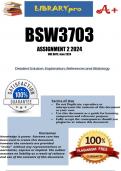Bio 245 Klesath Final
What hormones are produced by the Hypothalamus?(hormonal, humoral, or nervous
system) - ANS-Releasing Hormones- stimulate the release of specific hormones from
the anterior pituitary
Inhibiting Hormones- decrease the release of hormones from the anterior pituitary
Oxytocin (PRODUCES ONLY) - stored in the Posterior Pituitary Gland)- functions in
both the delivery of a baby and the ejection of milk in females. Nervous
ADH (PRODUCES ONLY - stored in the Posterior Pituitary Gland)- functions to help
maintain fluid balance, blood volume, and blood pressure.
What hormones are produced by the Anterior Pituitary?(hormonal, humoral, or nervous
system) - ANS-Gonadotropins- FSH and LH (Hormonal)- In a female they act on the
ovaries to control development of the oocyte and the follicle, ovulation, and the release
of estrogen and progesterone. In the male, FSH and LH act on the testes to regulate the
development of sperm and the release of testosterone.
Prolactin*-regulates mammary gland growth and breast milk production in females.
GH*- stimulates the liver to release both insulin-like growth factor 1 and 2. Stimulate cell
growth and cell division.
TSH*- stimulates both growth of the thyroid gland and TH.
ACTH*- stimulates the adrenal cortex to produce and secrete glucocorticoids, which
increase blood levels of nutrient molecules, including glucose, glycerol, fatty acids, and
amino acids.
What hormones are produced by the Posterior Pituitary?(hormonal, humoral, or nervous
system) - ANS-Oxytocin (SECRETES ONLY)*- stored in the posterior pituitary gland.
ADH (SECRETES ONLY)*- stored in the posterior pituitary gland.
What hormones are produced by the Thyroid?(hormonal, humoral, or nervous system) -
ANS-T3/T4*- T3 is the most active form of TH, however most cells have a greater
amount of T4. TH increases protein synthesis in all cells by stimulating the synthesis of
sodium potassium pumps in neurons.
Calcitonin*- released from the parafollicular cells of the thyroid gland. Reduces blood
calcium levels. Humoral
What hormones are produced by the Parathyroid Gland?(hormonal, humoral, or
nervous system) - ANS-Parathyroid Hormone- increases blood calcium by stimulating
the release of calcium from bone tissue.
,What hormones are produced by the Adrenal Medulla?(hormonal, humoral, or nervous
system) - ANS-Epinephrine*- fight or flight hormone Nervous
What hormones are produced by the Adrenal Cortex?(hormonal, humoral, or nervous
system) - ANS-Mineralcorticoid - Aldosterone- regulates the ratio of Na+ and K+ in the
blood and body fluids by alterting the amounts excreted by the kidney into the urine.
Stimulates Na+ retention and K+ secretion.
Glucocorticoid - Cortisol- works with ACTH to manage stress
Gonadocorticoid - weak androgens that can be converted to estrogen in females
What hormones are produced by the Pancreas?(hormonal, humoral, or nervous
system) - ANS-Negative Feedback
Glucagon*- increase blood glucose levels.
Insulin*- released in response to a rise in glucose level. Humoral
What hormones are produced by the Pineal Gland?(hormonal, humoral, or nervous
system) - ANS-Melatonin- drowsy
What hormones are produced by the Testes?(hormonal, humoral, or nervous system);
Testosterone- stimulates maturation and function of male reproductive system
What hormones are produced by the Ovaries?(hormonal, humoral, or nervous system) -
ANS-Estrogen&Progesterone- stimulate maturation and function of female reproductive
system.
What hormones are produced by the Heart?(hormonal, humoral, or nervous system) -
ANS-ANP- Functions primarily to decrease blood pressure by stimulating both the
kidneys to increase urine output and the blood vessels to dilate.
What hormones are produced by the Kidney?(hormonal, humoral, or nervous system) -
ANS-Renin- produces angiotensin II, a hormone that increases blood pressure.
What hormones are produced by the Thymus?(hormonal, humoral, or nervous system) -
ANS-Thymic hormones (Thymosin)- maturation of T-lymphocytes.
Pituitary dwarfism; exists at birth as a result of inadequate growth hormone production
due to a hypothalamic or pituitary problem.
Gigantism - ANS-Oversecretion of growth hormone in one's childhood
, Simple Goiter - ANS-the enlargement of the thyroid, typically due to an insufficient
amount of dietary iodine
Type 1 & Type 2 Diabetes mellitus - ANS-inadequate uptake of glucose from the blood.
Type 1, absent or diminished production and release of insulin by the beta cells of the
pancreatic islets. Type 2, decreased insulin release from the beta cells or decreased
insulin effectiveness at peripheral tissues.
Identify the major endocrine glands and other organs/tissues containing endocrine cells.
- ANS-Major- Pineal, pituitary, thyroid, and adrenal glands.
Mixed organs- skin, thymus, heart, stomach, liver, pancreas, kidneys, and gonads.
Compare the three reflex mechanisms that stimulate hormone secretion and provide an
example of each. - ANS-Hormonal Stimulation- Anterior pit secretes TSH> TSH- TH>
TH goes to capillaries
Humoral Stimulation- Blood glucose increases> pancreas releases insulin
Nervous Stimulation- sympathetic division is activated> epinephrine and norepinephrine
are released
Compare how lipid-soluble and water-soluble hormones are transported in the blood,
how they interact with the target cell receptors, and differences between their half-lives.
- ANS-Water soluble- Biogenic Amines- derived from amino acids, (TH, catecholamines,
melantonin) & Peptides/Proteins- amino acid chains, (ADH, GH, insulin, glucagon)-
activates 2nd messengers to cause a cascade of events within the cell- Shorter ½ life.
Lipid Soluble- Steroid- derivative of cholesterol(Sex hormones, cortisol, aldosterone)-
carrier proteins & lipid sol. horomones synthesize mRNA- longer ½ life.
Describe how lipid-soluble hormones initiate cellular changes in their target cells. -
ANS-Lipid sol hormone> hormone-receptor complex> cytsol or nucleus> hormone
response element> mRNA synthesis> mRNA> Ribosomal and mRNA complex>
Proteins
Define upregulation and downregulation and compare how circulating levels of a
hormone effect this process. - ANS-Upregulation- increase number of receptors on TC
Downregulation- decrease number of receptors on TC
Compare synergistic, permissive, and antagonist hormone interactions and provide
examples of each. - ANS-Synergistic- hormones work together to preform greater effect
Permissive- 1st hormone allows action of 2nd hormone
Antagonist- one hormone causes opposite effect of another hormone






